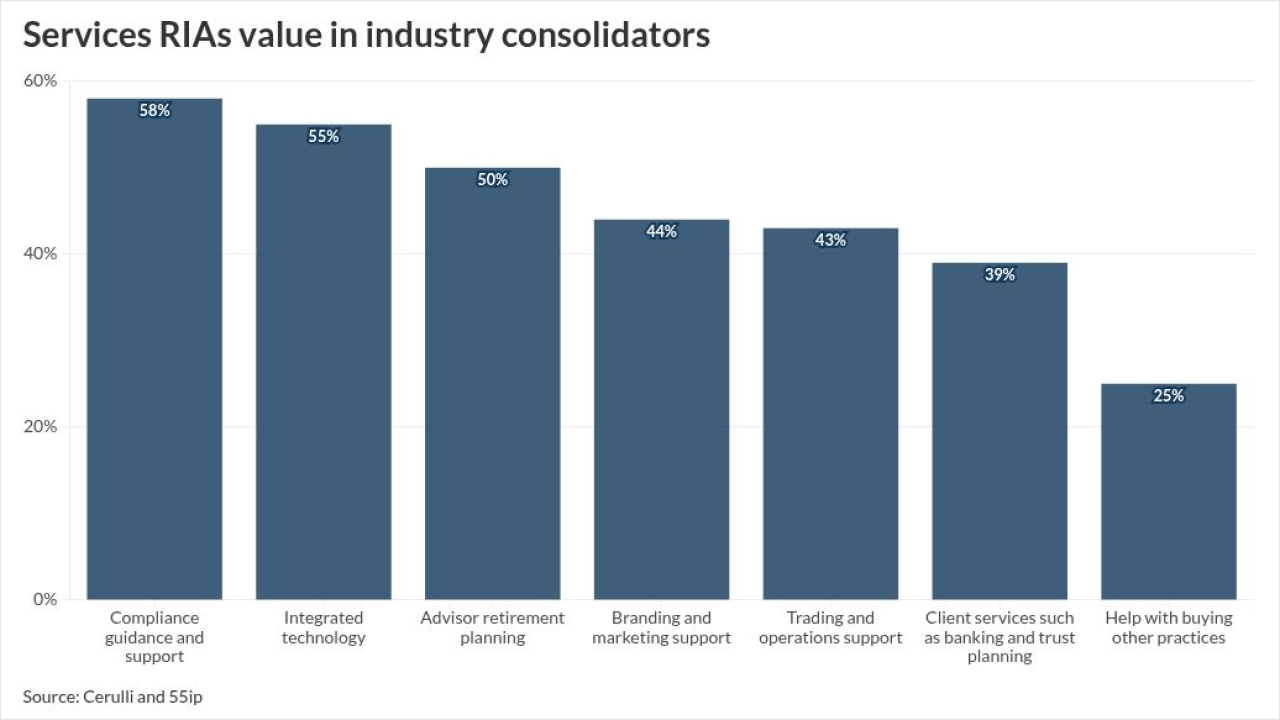Three months ago, a new client came to Jeff Cutter’s office to get help reviewing a financial plan. He noticed the client had about $800,000 in a variable annuity and wondered how much he knew about that annuity. “I asked him to tell me his understanding of the expenses associated with it,” says Cutter, founder of Falmouth, Massachusetts-based Cutter Financial Group. “He said there were none.”
Of course, that wasn’t accurate. So, Jeff called up the client’s insurance company and started asking questions. What was the mortality expense? 1%. Was there an administration expense? 0.5%. How about an income rider? 1.05%. What about the subaccount fees for the mutual funds held within the annuity? 2%. And the fee paid to the client’s broker? 1%. After all that, the person was paying 5.55% in annual fees.
Cutter has gone through this exercise many times over in his career, and not surprisingly, clients are often left stunned. “This person was getting madder and madder,” says Cutter. “The goal wasn’t to make him mad, though, it was to educate him.”
In many cases, advisors use annuities incorrectly
Most advisors probably have done something similar with their own clients. Annuities can be confusing, brokers often fail to disclose all the fees associated with them — especially with variable ones — and most people have no idea what to ask when buying insurance products. “It’s not that people are stupid,” he says, “it’s just that they don’t know the questions to ask.”
Sometimes firms don't make it easy. In May, Fifth Third Securities agreed to pay a $4 million fine and approximately $2 million in restitution to customers
A product with a bad rap: As a product, annuities are neither good nor bad, says Scott Dauenhauer, a CFP with Meridian Wealth Management in Murrieta, California. They’re just another financial vehicle. However, they are often “used for bad,” he says, in that they’re an easy sell — brokers often say these products are guaranteed even if they’re not — and insurance agents can make more money selling these products than traditional mutual funds.
Essentially, annuities provide an income stream for clients to use when they’re in their later years. At the most basic level, a client buys a policy for a lump sum and then, at some point, starts taking payments. Depending on the type of product, those payments can be guaranteed in that a set amount of money can come every month until the client passes away.
“This person was getting madder and madder”
Stan Haithcock, a Ponte Vedra Beach, Florida-based annuity agent who calls himself Stan the Annuity Man, says that in many cases advisors use these products incorrectly. They shouldn’t be used as an additional income stream, but rather they’re there to help create an income floor to help cover people’s basic needs. Advisors would then add to that base amount through more traditional investments, he says.
“Build the income floor with annuities and then you buy bonds, treasuries, stocks and ETFs,” he says. “Instead of a systematic withdrawal, which is what most people do, build that floor with a guaranteed income stream and you’ll be able to manage your clients’ money better.”
Annuities themselves, though, can be complicated, which is why clients — and even many advisors — have trouble figuring out whether they’re useful or not, let alone how much they cost.
“It’s an advisor’s fiduciary duty to look at all the available options and try to find the one that fits them best,” Dauenhauer says. “In some cases that solution can be an annuity and there should be no aversion to that. But you have to find the right product.”
-
The products are designed to provide some upside potential yet limit investment risk, which has helped boost their popularity.
April 30 -
Advisors need to educate clients — but not dumb down their advice — when it comes to the complex world of these investment vehicles.
April 24 -
The products have grown in popularity after undergoing significant changes in recent years.
April 25
Plenty of fees: The most confusing and fee-filled annuity is the variable annuity. People like variable annuities because they’re invested in the market — their assets buy mutual funds — and their values can rise if stocks climb. Though the opposite is true, too. While a client will get a payment for life once they start withdrawing, the dollar value itself is not guaranteed. It’s structured in a way that someone might receive a higher payment at first, only to see that payment cut in half as the asset value of the annuity drops.

Unfortunately, these products are expensive. So much that, depending on the income your client is withdrawing, it can be a struggle to earn anything. Naturally, insurance companies don’t want their clients to know about the fees, which is why they’re listed deep into the insurance policy.
“They’re buried on, like, page 84, where no one reads it,” Cutter says.
These fees are often clumped together, so look through the policy for words like mortality charge, death benefit and administration fees, and you’ll find them.

The other type of annuity is the fixed income annuity, which is much more straightforward than the variable kind. Clients buy a policy, that money is invested in CDs and other fixed income instruments, and then they get a certain percentage of their investment when they’re ready to withdraw.
There are almost no additional fees with this kind of product, other than potential surrender charges and some come with an income rider. Instead, companies make money off the difference between what they’re paying your client and what they can make in the market off your client’s funds. For instance, if the market rises by 5%, then the client’s annuity might grow by 2% — “so the spread of 3% is what the insurance company makes their money on,” Cutter says.
Some fixed annuities also have a cap so no matter how high the market rises, your client’s funds only rise by a certain amount. In either case, the client won’t lose money like they might with variable annuities.
While annuities may work for some clients, it’s always important to read through the policy and find those fees.
“Prospectuses are incredibly dense, which is why people buying them, and people selling them, don’t understand them,” Dauenhauer says. “When someone brings one to me I usually have to call the company and run the numbers to see if it makes sense.”





